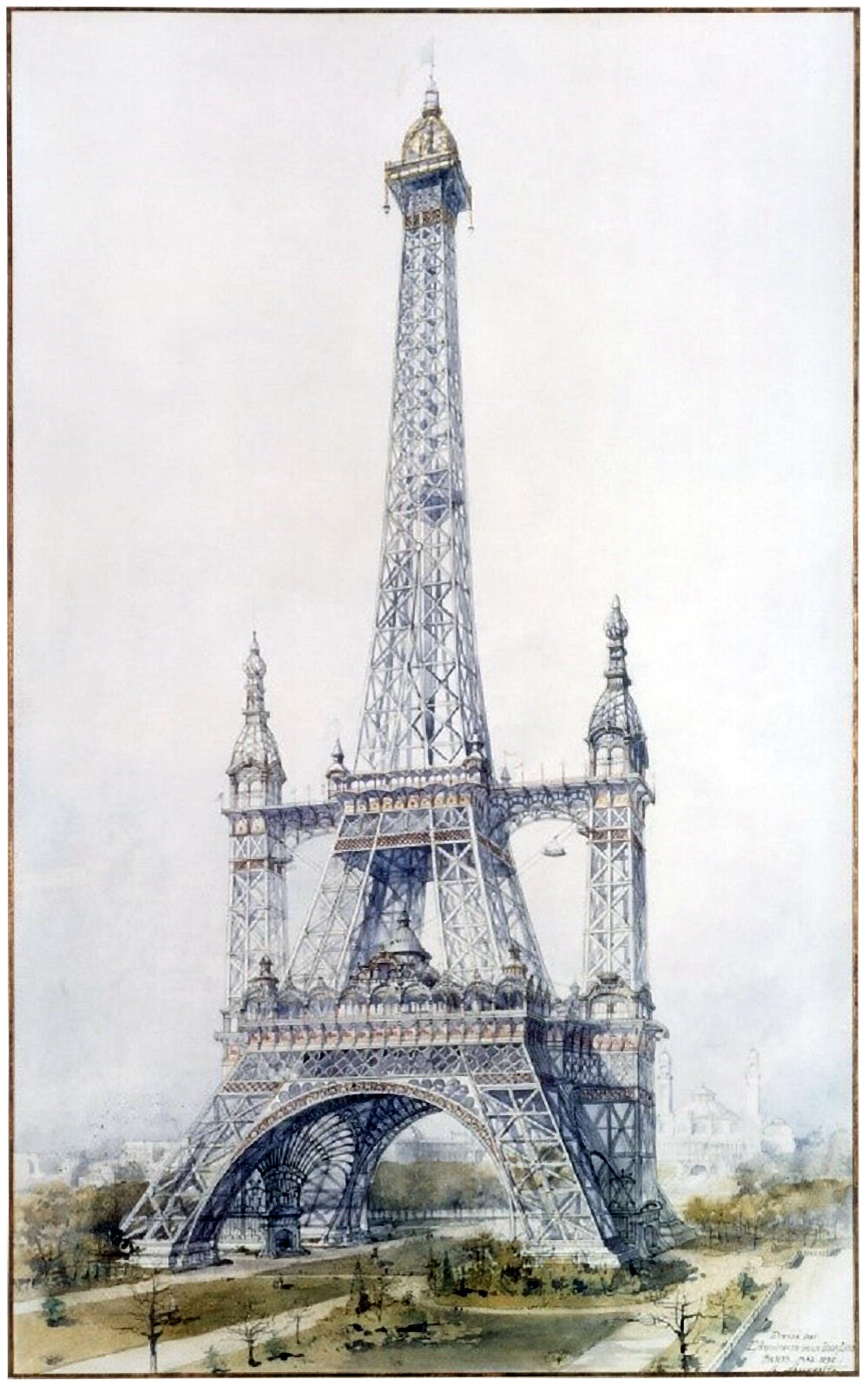Alternate Realities : The Eiffel Tower
Illustration of an alternate design for the Eiffel Tower. Designed by French architect Stephen Sauvestre, the proposal provides more floor area as well as better vertical transportation.
There’s an interesting subtext to unbuilt projects throughout the history of architecture. Unbuilt additions to existing buildings are the most intriguing, because they respond to an existing mind-scape rather than create a new one. The above illustration is a perfect example of this. It shows a preliminary design for the Eiffel Tower in Paris, drawn by French architect Stephen Sauvestre.
Sauvestre was a close collaborator with Eiffel, and he was the main designer of the tower. The illustration above must’ve been one of the proposals they considered during the design process. It’s impossible to know if this design would go on to become as iconic as the design that ultimately got built, but it’s an intriguing thought to ponder.
The main function of the addition is to add more infrastructure for people to travel up, down and around it. This is a legitimate gain for the building, since it would become so popular with the public and the lines to ascend it can get quite long. It does change the effect of the building quite a bit, however. What was a singular, sweeping gesture of height becomes a segmented triad. Does this improve the building? Perhaps. Does this ruin the building? Perhaps. It’s a similar question to the Empire State Building, which had a TV antenna added to it in the 1960’s, which made the spire taller. Nowadays, it’s become part of the building, and most people aren’t even aware it wasn’t part of the original design. I suppose the proposal pictured above might have the same effect, but it’s hard to believe something like this would ever get built today, since the Eiffel Tower is known the world over as one of the world’s most iconic pieces of architecture. Another question is whether the addition is meant to enhance the design, or if it’s just responding to the structure’s popularity. The former is a legitimate reason, while the latter is rarely going to make the structure better; it’s more of a cash-grab.
Check out other unbuilt designs here.

